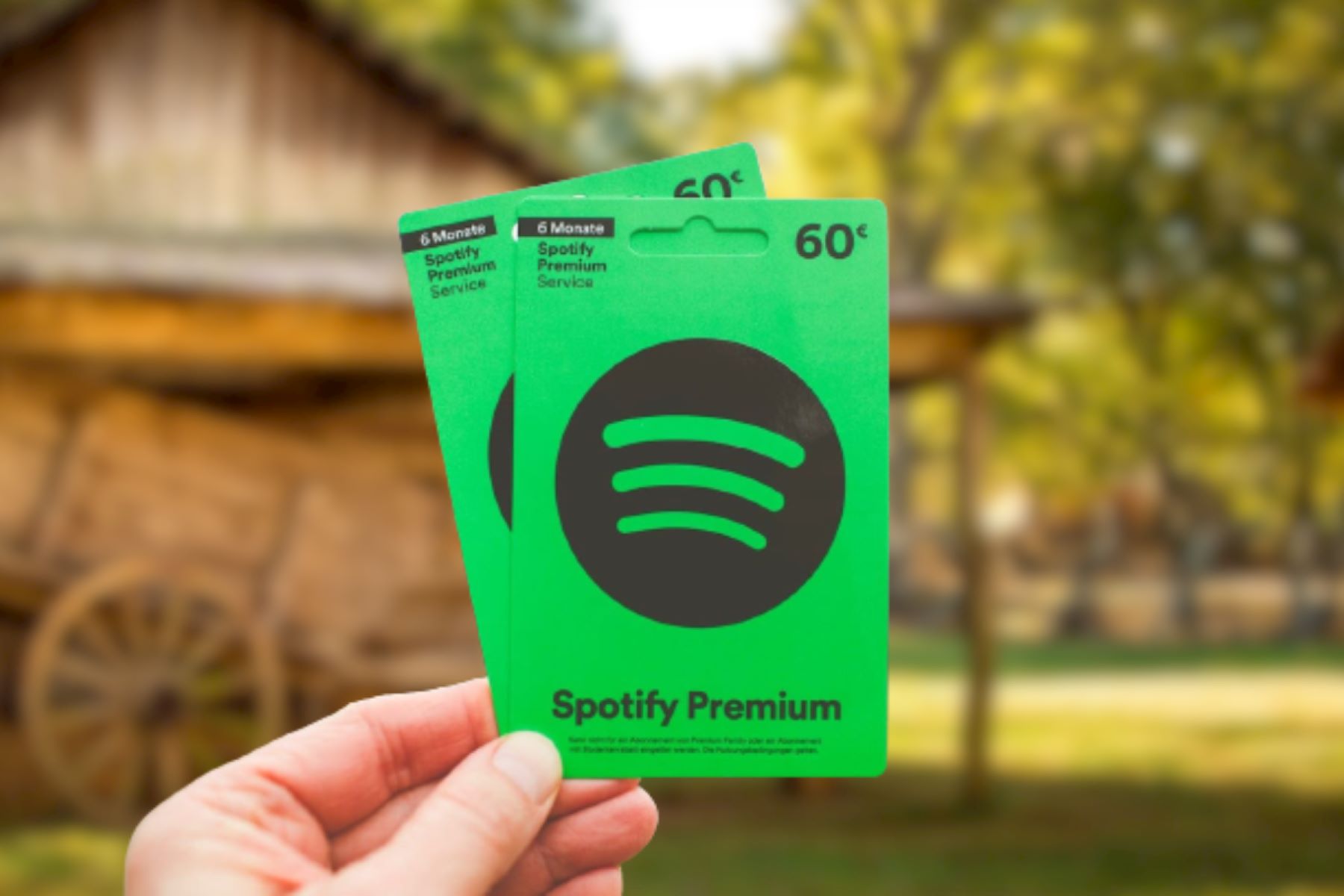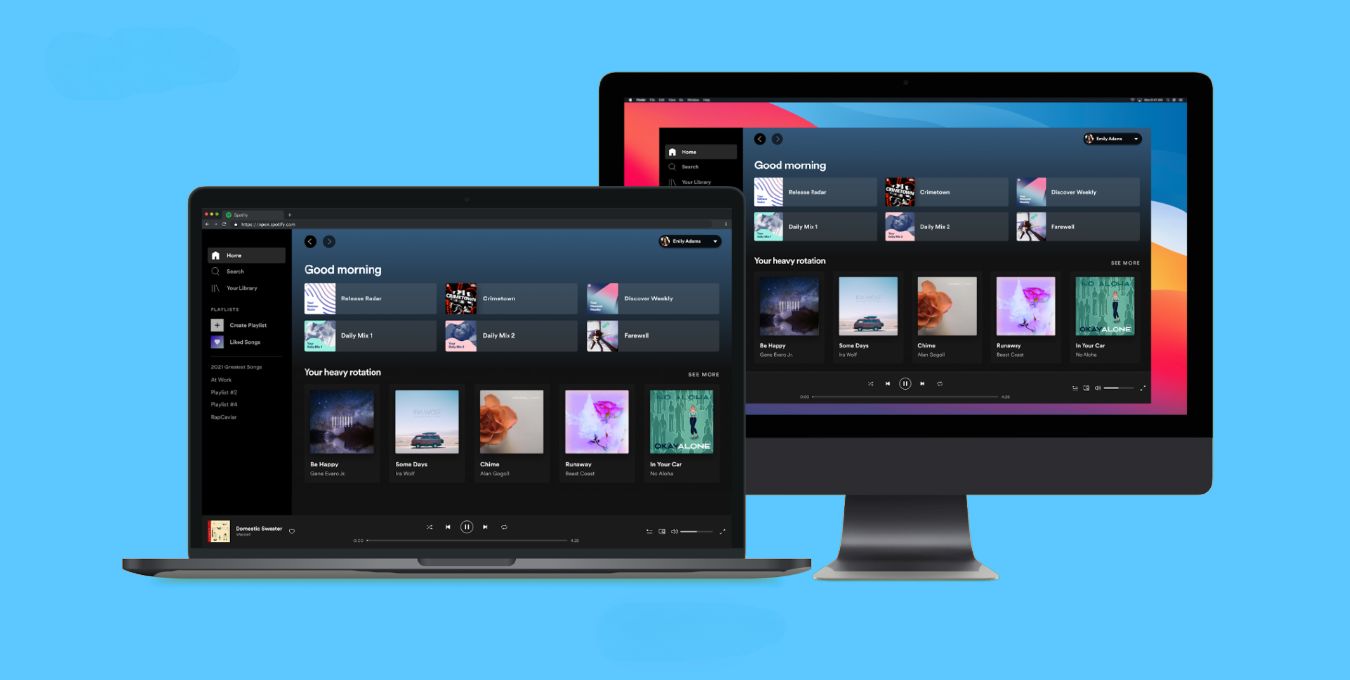Introduction
Welcome to the digital era of music streaming, where artists have the opportunity to share their creativity and connect with millions of music enthusiasts around the world. One such platform that has revolutionized the music industry is Spotify, a popular streaming service with over 320 million active users.
Now, you may be wondering how to showcase your musical talent on Spotify and reach a wider audience without breaking the bank. In this article, we will guide you through the process of putting your music on Spotify for free, enabling you to share your passion and gain exposure in the competitive music landscape.
With the rise of independent artists and self-published music, it has become imperative to have a strong online presence. Spotify offers a platform where you can build a dedicated fan base, connect with listeners from all over the world, and potentially attract the attention of music industry professionals.
In the following steps, we will walk you through the process of creating an artist account, signing up for Spotify for Artists, preparing your music files, choosing the right distribution service, uploading your music, submitting it for Spotify approval, optimizing your artist profile, and promoting your music effectively.
By following this comprehensive guide, you will have the necessary tools and knowledge to make your music accessible to Spotify users worldwide. So, let’s dive in and unlock the potential of Spotify as a platform to promote your music, connect with fans, and take your musical journey to new heights.
Step 1: Creating an Artist Account
The first step to putting your music on Spotify is to create an artist account. Having an artist account allows you to manage your music, track your performance, and engage with your fans directly. To create an artist account, follow these simple steps:
- Visit the Spotify for Artists website.
- Click on the “Sign Up” button located on the top right corner of the page.
- Choose whether you want to sign up using your personal Spotify account or create a new one specifically for your artist profile.
- If you decide to sign up using your personal Spotify account, make sure it is connected to your artist identity. This will help maintain consistency and ensure a seamless transition between your personal and artist accounts.
- If you prefer to create a new account, follow the prompts to fill in your personal information.
- Once your account is created, you will be prompted to verify your email address. Check your inbox for a verification email from Spotify and follow the instructions to complete the verification process.
- After verification, you will gain access to your artist account dashboard.
When creating your account, it is important to choose a unique and memorable artist name that best represents your musical identity. Keep in mind that your artist name will be how fans will discover and recognize you on the platform.
Additionally, take the time to upload an eye-catching profile picture and write a compelling artist bio. Your profile picture should be high-quality and visually appealing, while your artist bio should succinctly describe your musical style and captivate potential listeners.
Creating an artist account is the first step in your journey to put your music on Spotify. It sets the foundation for managing your music and interacting with your audience. Now that you have your artist account set up, it’s time to move on to the next step: signing up for Spotify for Artists.
Step 2: Signing Up for Spotify for Artists
Once you have created your artist account, the next step is to sign up for Spotify for Artists. This platform provides valuable insights and tools to help you understand your audience, track your streaming stats, and optimize your presence on Spotify. Follow these steps to sign up:
- Go to the Spotify for Artists website.
- Click on the “Get Access” button located on the top right corner of the page.
- Log in to your artist account using your Spotify credentials.
- If you don’t already have an artist account, follow the steps outlined in the previous section to create one.
- Once you’re logged in, you’ll be redirected to the Spotify for Artists dashboard.
- Here, you’ll have the option to claim your artist profile by searching for your artist name. If your profile is already claimed, you can request access to manage it.
- After claiming or requesting access, you will need to verify your identity as the rightful owner of the artist profile. This can be done by providing additional information or linking your social media accounts.
- Once your identity is verified, you will gain access to the full range of Spotify for Artists features, including real-time streaming data, customizing your artist profile, and accessing promotional tools.
Signing up for Spotify for Artists is essential for managing your presence on the platform effectively. It allows you to track your performance, gain insights into your audience demographics, and make data-driven decisions to promote your music.
Take advantage of the customizing options available on Spotify for Artists to make your artist profile visually appealing. Upload high-resolution images that reflect your artistic image and select a standout header image that captures the essence of your music.
In addition, Spotify for Artists provides promotional tools that allow you to create personalized playlists, pitch your songs for editorial playlists, and promote your music through the platform’s advertising options. Utilizing these tools effectively can help increase your visibility and reach on Spotify.
With Spotify for Artists, you have the power to delve into the analytics of your music, understand your audience, and tailor your promotional strategies accordingly. This valuable resource will be instrumental in your journey to putting your music on Spotify.
Step 3: Preparing Your Music Files
Before you can upload your music to Spotify, it’s important to ensure that your audio files are properly prepared. This step ensures that your music sounds its best and meets Spotify’s quality standards. Here are a few things to consider when preparing your music files:
- Choose the right file format: Spotify accepts audio files in the MP3 or WAV format. MP3 is the most commonly used format and offers a good balance between quality and file size, while WAV is a lossless format that provides higher audio quality but results in larger file sizes. Choose the format that best suits your needs and preferences.
- Set the correct bit rate: The bit rate determines the quality of the audio file. For MP3 files, a bit rate of 320 kbps is recommended for optimal sound quality. If you are using WAV files, make sure they are in a high-resolution format (e.g., 16-bit/44.1kHz or higher) to preserve the audio fidelity.
- Normalize the volume: Normalizing the volume ensures that all the tracks in your album or playlist have a consistent volume level. This prevents sudden volume changes between songs and provides a smoother listening experience for your listeners. You can use audio editing software to normalize the volume of your tracks.
- Add metadata: Metadata is the information associated with your music files, such as the artist name, track title, album name, and genre. It is essential to fill in this information accurately as it helps listeners discover and organize your music on Spotify. Use a music management software or audio editing software to add metadata to your files.
- Consider album art: Album art is the visual representation of your music and plays a crucial role in grabbing listeners’ attention. Create eye-catching and high-quality album artwork that reflects the style and theme of your music. Spotify recommends using square images with a minimum size of 640 x 640 pixels.
By taking the time to properly prepare your music files, you ensure that your tracks sound their best and meet the quality standards set by Spotify. Paying attention to the details such as file format, bit rate, volume normalization, metadata, and album art will enhance the overall listening experience and make your music more appealing to potential listeners.
Once your music files are ready, it’s time to move on to the next step: choosing the right distribution service to get your music onto Spotify.
Step 4: Choosing the Right Distribution Service
When it comes to getting your music on Spotify, you will need to work with a distribution service. A distribution service acts as the intermediary between you, the artist, and Spotify, ensuring that your music is delivered to the platform and made available to listeners. Here are some factors to consider when choosing the right distribution service:
- Cost: Look for a distribution service that offers a pricing model that aligns with your budget and needs. Some services charge a one-time fee per release, while others have a yearly subscription or take a percentage of your streaming revenue. Evaluate the pricing structure and choose the option that makes the most sense for you.
- Platform reach: Check which streaming platforms and online music stores the distribution service works with. While Spotify is likely your main focus, it’s beneficial to have your music distributed to other platforms such as Apple Music, Amazon Music, and Google Play. This expands your reach and maximizes your chances of gaining new listeners.
- Royalty payments: Find out how the distribution service handles royalty payments. Look for transparency in their reporting and make sure they have a reliable system for tracking and distributing your earnings. Consider services that offer detailed analytics and a user-friendly interface to keep track of your streaming revenue.
- Additional features: Some distribution services offer additional features that can enhance your music career. This may include promotional tools, content protection, playlist pitching services, and social media integration. Assess these additional features and determine if they align with your goals as an artist.
- Customer support: It’s important to choose a distribution service that provides excellent customer support. Look for a service that offers responsive and helpful customer service representatives who are available to assist you with any questions or issues that may arise during the distribution process.
Take the time to research different distribution services, compare their features and pricing, and read reviews from artists who have used their services. Some popular distribution services to consider are TuneCore, DistroKid, CD Baby, and Ditto Music.
Choosing the right distribution service is a crucial step in getting your music on Spotify. It ensures that your music is delivered to the platform efficiently and that you have access to the necessary tools and support to manage your releases effectively.
Once you have selected your distribution service, it’s time to move on to the next step: uploading your music and metadata to the distribution platform for distribution to Spotify and other streaming platforms.
Step 5: Uploading Your Music to a Distribution Service
With your chosen distribution service in place, it’s time to upload your music and metadata to the platform. This step is crucial as it allows the distribution service to deliver your music to Spotify and other streaming platforms. Follow these steps to upload your music:
- Create an account: If you haven’t already done so, create an account with your chosen distribution service. Provide the necessary information, complete the registration process, and log in to your account.
- Prepare your music files: Ensure that your music files are properly formatted and ready for upload. Refer to the specifications provided by the distribution service to ensure your files meet the required format, bit rate, and file size criteria. Most distribution services have detailed guidelines and instructions on how to prepare your music files.
- Choose your release type: Determine whether you will be releasing a single, EP, or full-length album. Select the appropriate release type within the distribution platform and provide all the necessary details such as the album or single title, tracklist, and release date.
- Upload your music: Follow the instructions provided by the distribution service to upload your music files. This typically involves selecting the files from your computer and initiating the upload process. Some services may require you to compress your music files into a zip folder before uploading.
- Enter metadata: Metadata is crucial for the organization and discovery of your music on streaming platforms. Input accurate and complete metadata for each track, including the song title, artist name, album name, genre, and any other relevant information. Take the time to double-check for spelling errors and inconsistencies.
- Select distribution platforms: Choose the streaming platforms where you want your music to be available. Ensure that Spotify is selected as one of the streaming platforms for distribution. You may also select other platforms based on your target audience and goals.
- Review and confirm: Before finalizing the upload, review all the information, including the music files, metadata, release type, and distribution platforms. Make sure everything is accurate and complete. Once you are satisfied, confirm the submission.
It’s important to note that the distribution service may have its own review process to ensure that your music meets quality standards and metadata guidelines. This can take a few days or weeks, depending on the service. Be patient and wait for confirmation that your music has been successfully submitted.
Once your music is submitted and approved by the distribution service, they will take care of delivering your music to Spotify and other streaming platforms. It typically takes a few business days for your music to become available on Spotify, so be prepared to wait for the release date to see your music live on the platform.
Uploading your music to a distribution service brings you one step closer to making your music available to the world. Now, let’s move on to the next step: submitting your music for Spotify approval.
Step 6: Submitting Your Music for Spotify Approval
After uploading your music to the distribution service, the next step is to submit your music for Spotify’s approval. This process ensures that your music meets Spotify’s content guidelines and quality standards. Follow these steps to submit your music for Spotify approval:
- Wait for distribution: After uploading your music to the distribution service, your music will be delivered to Spotify along with other streaming platforms. It may take a few business days for the distribution service to complete this process and for your music to reach Spotify’s system.
- Check the status: Once your music is delivered to Spotify, log in to your Spotify for Artists account and navigate to the “Music” section. Here, you can check the status of your releases and see if they are “Delivered” or “Pending.” If they are still listed as “Pending,” it means Spotify is reviewing your music.
- Be patient: The approval process typically takes a week or two, but it can vary depending on the volume of submissions Spotify receives. During this time, it’s important to be patient and wait for Spotify’s decision. Avoid making multiple submissions or contacting Spotify directly about the status of your music, as it may hinder the review process.
- Receive approval or rejection: Once Spotify has reviewed your music, you will receive an email notification regarding its approval or rejection. If your music is approved, congratulations! It will be made available on Spotify and you can start promoting and sharing your music. If it’s rejected, Spotify will provide information on why it was rejected and any necessary steps to address the issue.
During the review process, Spotify assesses factors such as the audio quality, originality, and adherence to their content guidelines. They also verify that the metadata you provided accurately represents your music. It’s important to ensure that your music meets these criteria and that the metadata is complete and accurate before submitting it.
If your music is rejected, don’t be disheartened. Spotify’s rejection doesn’t mean the end of your journey. Take the feedback provided and make the necessary adjustments to improve your music. Once you’ve addressed the issues, you can resubmit your music for review.
Remember, the process of submitting your music for Spotify’s approval is crucial in ensuring that the platform maintains a high standard of quality. It may require some patience, but once your music is approved, you can showcase your talent to Spotify’s vast audience and start building your fanbase.
Now that you understand the process of submitting your music for Spotify approval, let’s move on to the next step: optimizing your artist profile to stand out on the platform.
Step 7: Optimizing Your Artist Profile
Once your music is approved and available on Spotify, it’s time to optimize your artist profile. Optimizing your profile helps you stand out, attract listeners, and create a strong brand presence on the platform. Follow these steps to optimize your artist profile:
- Add a compelling bio: Your artist bio is an opportunity to tell your story and connect with listeners. Craft a concise and engaging bio that showcases your musical journey, influences, and unique selling points. Highlight any notable achievements, collaborations, or significant performances.
- Create an eye-catching profile picture: Your profile picture is the first visual representation of your music that listeners see. Use a high-quality, visually appealing image that accurately reflects your style and brand. It should be instantly recognizable and leave a lasting impression.
- Update your header image: The header image is another important visual element that represents your music. Use this space to display album artwork, upcoming show dates, or any visuals that align with your music’s theme. Make sure the image is captivating and complements your profile picture.
- Add social media links: Connect your social media accounts to your artist profile to provide more avenues for fans to engage with you. Include links to your official website, Facebook, Instagram, Twitter, and other relevant platforms. This makes it easier for listeners to find and follow you outside of Spotify.
- Curate playlists: Create playlists that showcase your musical taste and influences. Curating playlists helps you connect with listeners who have similar music preferences and allows them to discover your own music in the process. Be creative and showcase a diverse selection of songs that represent your musical style.
- Encourage followers: Encourage listeners to follow your artist profile by promoting it on your social media channels, website, and other online platforms. Engage with your fans through regular updates, exclusive content, and interactions to build a loyal following.
- Promote your music: Utilize Spotify’s promotional tools to gain more exposure. Submit your music for consideration to editorial playlists, participate in collaborative playlists, and share your music on other online platforms. Engage with fans through Spotify’s social features, such as sharing updates and thanking fans for their support.
- Monitor your analytics: Regularly check Spotify for Artists to track your streaming performance. Analyze the data to gain insights into your audience demographics, popular tracks, and listener trends. Use this information to tailor your marketing strategies and make data-driven decisions to grow your fanbase.
Optimizing your artist profile helps you create a strong and engaging presence on Spotify. It enhances your chances of attracting new listeners and building a loyal fanbase. Remember to regularly update and maintain your profile to keep it fresh and relevant.
By following these optimization strategies, you can make the most of your artist profile and maximize your music’s reach on Spotify.
Now that your artist profile is optimized, it’s time to move on to the next step: promoting your music effectively to reach a wider audience.
Step 8: Promoting Your Music on Spotify
Promoting your music effectively is crucial to gaining visibility, attracting new listeners, and growing your fanbase on Spotify. Here are some strategies to promote your music and maximize your reach on the platform:
- Share on social media: Leverage your social media presence to promote your music on Spotify. Share links to your Spotify artist profile, playlists, and specific tracks with engaging captions and eye-catching visuals. Encourage your followers to listen, save, and share your music with their networks.
- Collaborate with influencers and bloggers: Reach out to influencers, bloggers, and music curators who have a strong following in your genre. Offer them exclusive content, such as pre-release tracks or interviews, in exchange for featuring your music on their platforms. This can help expose your music to a wider audience.
- Pitch your music to playlists: Submit your music to Spotify’s editorial playlists for consideration. Research playlists that align with your musical style and genre, and tailor your pitch to match their criteria. Additionally, create your own playlists and engage with your listeners through collaborative playlists.
- Engage with your fans: Regularly interact with your fans on Spotify by replying to comments, thanking them for their support, and incorporating their feedback. Building a personal connection with your fans can foster loyalty and encourage them to share your music with others.
- Utilize cross-promotion: Collaborate with other artists in your genre to cross-promote each other’s music. Consider featuring each other’s tracks on your playlists, recording collaborations together, or even organizing joint promotional events. Cross-promotion expands your audience reach and creates a sense of community among fans.
- Create engaging content: Stand out by creating engaging and unique content related to your music. This can include behind-the-scenes footage, acoustic versions of your tracks, music videos, lyric videos, or live performances. Share this content on your social media platforms and encourage fans to engage with it.
- Play live shows: Perform live shows and promote your Spotify profile and music during your performances. Provide information on how to find and follow you on Spotify, and offer exclusive discounts or bonus tracks for fans who engage with your music on the platform.
- Collaborate with visual content creators: Work with visual content creators, such as photographers or videographers, to create captivating visuals that complement your music. Use these visuals to promote your music on social media and include them in your Spotify artist profile artwork.
Remember that promoting your music is an ongoing process. Continuously engage with your fans, stay active on social media, and seek new opportunities to get your music in front of new listeners. It’s important to find a balance between promotion and maintaining a genuine connection with your audience.
By implementing these promotional strategies, you can increase your visibility on Spotify, gain more streams, and continue to build your presence in the music industry.
Congratulations! You have completed all the steps to put your music on Spotify and promote it effectively. Now it’s time to embark on your musical journey and continue creating and sharing your art with the world.
Conclusion
Congratulations on successfully putting your music on Spotify and taking the necessary steps to promote it effectively! You’ve learned how to create an artist account, sign up for Spotify for Artists, prepare your music files, choose the right distribution service, upload your music, submit it for Spotify approval, optimize your artist profile, and promote your music on Spotify.
By following these steps, you’ve gained access to a vast audience and the potential to connect with music lovers from around the world. Spotify offers an opportunity for independent artists like you to showcase their talent, build a fanbase, and even attract the attention of music industry professionals.
Remember that success on Spotify requires ongoing effort and dedication. Continue engaging with your fans, promoting your music through various channels, and seeking new opportunities to increase your visibility. Regularly monitor your analytics, track your streaming performance, and adapt your strategies accordingly.
It’s also important to continue creating and releasing new music. Consistently providing fresh content keeps your audience engaged and provides more opportunities for exposure and growth. Experiment with different genres, collaborate with other artists, and never stop exploring and pushing the boundaries of your musical style.
Lastly, enjoy the journey. The process of putting your music on Spotify and promoting it is an exciting and fulfilling experience. Embrace the ups and downs, celebrate milestones and achievements, and cherish the connections you make with your fans along the way.
Now that you have the tools and knowledge, it’s time to make your mark on Spotify. Share your passion, express your creativity, and let your music touch the hearts of listeners around the world. Best of luck on your musical journey!

























